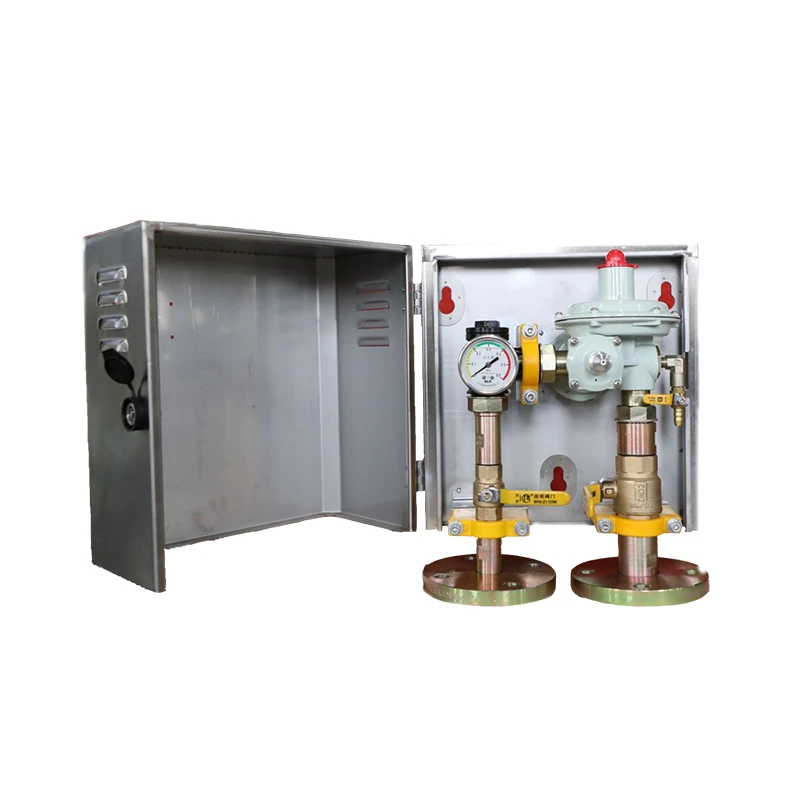
9 月 . 30, 2024 22:36
Back to list
Gas Pressure Regulation System for Efficient Delivery and Safety Management
Understanding Gas Pressure Reducers A Comprehensive Overview
Gas pressure reducers, commonly known as gas pressure regulators, are vital components in various applications where gases are used. These devices are designed to maintain a consistent output pressure, ensuring the safety and efficiency of gas systems. This article delves into the key features, working principles, applications, and benefits of gas pressure reducers.
What is a Gas Pressure Reducer?
A gas pressure reducer is a mechanical device that reduces the pressure of gas from a higher input level to a lower output level. This regulation is crucial in applications ranging from industrial processes to residential heating systems. Gas pressure reducers come in various designs to accommodate different gas types, pressures, and flow rates, making them versatile tools in numerous fields.
How Does a Gas Pressure Reducer Work?
The working principle of a gas pressure reducer is relatively straightforward. When high-pressure gas enters the regulator, it acts on a diaphragm that is connected to an adjustable spring. The force of the gas pressure pushes the diaphragm upward, compressing the spring. As the diaphragm moves, it opens or closes an internal valve that controls the flow of gas exiting the regulator. This dynamic allows the regulator to maintain a consistent output pressure, regardless of variations in the input pressure or demand downstream.
Most gas pressure reducers are designed with specific pressure settings, calibrated during manufacturing or adjustable via a preset knob. This allows users to customize the output pressure to meet the needs of their particular application.
Types of Gas Pressure Reducers
There are several types of gas pressure reducers, each tailored for specific applications
1. Single-Stage Regulators These regulators are suited for applications where the pressure requirement is not highly variable. They reduce the pressure in one stage, providing sufficient regulation for residential use, such as gas stoves and water heaters.
2. Two-Stage Regulators These offer more precise pressure control and are commonly used in commercial and industrial applications. The two stages allow for better handling of fluctuations in the input pressure, providing stable output even when there are significant variations in supply.
3. Back Pressure Regulators These types of regulators are used to maintain a specific pressure level in a system, often in applications where upstream processes need to operate at a constant pressure.
4. Electronic Pressure Regulators With advancements in technology, electronic pressure regulators have emerged. They use sensors and control systems to adjust gas flow automatically, offering high precision and adaptability.
Applications of Gas Pressure Reducers
gas pressure reducer

Gas pressure reducers are employed in various industries and uses
- Industrial Manufacturing They are essential in processes that require precise gas flow and pressure control, such as welding, gas processing, and chemical manufacturing.
- Residential Heating Many home heating systems rely on gas pressure reducers to ensure safety and efficiency while providing consistent heat output.
- Medical Applications In healthcare settings, gas regulators are critical for delivering the correct pressure for gases used in medical devices, ensuring patient safety.
- Food Processing Gas pressure regulators play a crucial role in food manufacturing, where they help in controlling gas used in packaging and preserving food quality.
Benefits of Using Gas Pressure Reducers
The advantages of incorporating gas pressure reducers into a system are numerous
- Safety By preventing over-pressurization, these devices significantly reduce the risk of gas leaks and explosions.
- Efficiency Maintaining a consistent pressure allows for optimal performance of gas-powered equipment, improving overall system efficiency.
- Cost Savings Efficient gas usage correlated with pressure regulation can lead to lower energy costs and reduced wastage.
- Versatility With various types available, gas pressure reducers can be used in diverse applications, accommodating different gas types and operating pressures.
Conclusion
Gas pressure reducers are essential devices that ensure the safe and efficient use of gases across a multitude of applications. Understanding their operation, types, and benefits can help industries and homeowners alike make informed choices about their gas systems. With the right gas pressure reducer in place, users can enjoy improved safety, efficiency, and cost-effectiveness in their gas operations.
Latest news
-
Unlocking The Quality Gas Pressure ReducersNewsNov.01,2024
-
The Role of Gas Pressure Reducing StationsNewsNov.01,2024
-
The Importance and Functionality of Safety Relief ValvesNewsNov.01,2024
-
The Essential Role of Safety Valves in Natural Gas ApplicationsNewsNov.01,2024
-
The Essential Role of Gas Pressure RegulatorsNewsNov.01,2024
-
Enhance Your Premium Gas FiltersNewsNov.01,2024

